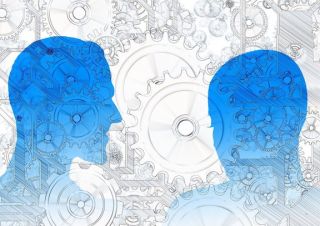KEY POINTS-
- The duality of virtues and vices is a driving force behind societal progress.
- Human growth requires a complex interplay of comfort and discomfort.
- Technologies like LLMs and GPTs come with both transformative promise and ethical pitfalls.

In an age where social orthodoxy often dictates what is acceptable and what isn’t, the nuanced interplay of “good” and “bad” becomes a murky realm. What’s intriguing and perhaps unsettling is that our civilization is as much a construct of our vices as our virtues. Contrary to the sanitization of history and reality, it’s critical to acknowledge this duality in shaping human civilization. A nuanced understanding of the forces that bind us and break us is not just an intellectual exercise; it is a fundamental framework for our growth as a species.
The Good, the Bad, and the Construct of Reality
We often romanticize the idea of an ideal society built purely on the precepts of morality and justice. But this notion, while noble, disregards the reality that many of the societal structures and technologies we benefit from today were born out of periods of intense conflict, suffering, and moral ambiguity. The Internet, for instance, was originally conceived as a military network during the Cold War. Even penicillin, a landmark discovery that has saved countless lives, proliferated rapidly due to the need for treating infected wounds in World War II.
The Paradox of Progress
One may argue that progress is often born from discomfort and, at times, unethical circumstances. While we shouldn’t glorify or perpetuate suffering, recognizing its role in societal advancement provides an insightful, albeit uncomfortable, layer of understanding. The complexities of the human psyche—a blend of altruism, greed, ambition, and fear—are the threads that weave the complex tapestry of civilization.
The Coddled Society: An Unintended Consequence
Imagine an individual or a society that’s been so sheltered from adverse events that they grow up in a state of ineffectiveness and lack of social awareness. This hypothetical realm, an echo chamber of sorts, would perpetuate ignorance and rob the individual or society of the strength that comes from adversity. Learning often happens at the fringes of discomfort in confronting the unfamiliar and the challenging.
The Philosophical Underpinnings: From Nietzsche to Hegel
Philosophers like Friedrich Nietzsche and Georg Wilhelm Friedrich Hegel have deeply explored the concept of duality. Nietzsche’s idea of “eternal recurrence” posits that life is a repetitive cycle of events that includes both triumphs and tragedies. Hegel’s dialectic underlines that the synthesis of thesis and antithesis results in a higher form of understanding. In both instances, the existence of bad is not merely an unfortunate byproduct of reality but an essential catalyst for growth and progress.
The Role of Innovation and Technology
As we push further into the landscape of technological innovation, two contemporary advancements, Large Language Models (LLMs) and Generative Pre-trained Transformers (GPTs), exemplify the essence of the duality of good and bad. These technologies promise to redefine the realms of machine learning, natural language understanding, and human-AI collaboration. However, they are not without their paradoxes.
For instance, one of the most curious phenomena in GPT systems is the occasional “hallucinations” or the generation of seemingly erroneous or implausible data. While many may consider these occurrences to be mere bugs or system flaws, a different lens suggests they could be inherent features of a complex system striving for a form of “understanding.” These hallucinations could be akin to the limitations and idiosyncrasies that are intrinsic to human cognition—flawed but invaluable for making sense of an unpredictable world. Similarly, LLMs are designed to adapt and learn continuously, mimicking the human ability to acquire new skills over a lifetime. Yet, their capacity to deviate from their original programming raises questions of control and ethical responsibility.
These innovations also illustrate the duality concept from a societal perspective. On the one hand, LLMs and GPTs offer the potential for untold advancements in medical diagnostics, educational systems, and even in addressing large-scale societal issues like climate change. On the other hand, they pose significant ethical challenges such as job displacement, data privacy, and the aforementioned system hallucinations that could potentially misinform or mislead.
The duality inherent in these technologies makes it imperative for us to engage in a meaningful dialogue that goes beyond simple cost-benefit analyses. If we were to neuter the “bad” from these technologies, we risk stripping them of their complexity and potential for genuine innovation and transformation. What’s required is a nuanced approach that recognizes the imperfections as not just challenges but also as opportunities for deeper understanding and improvement.
A Precarious Tilt
The neutrality of reality cannot be tilted solely in the direction of what is deemed “good” by the prevailing orthodoxy. Such a move undermines the complex, multilayered nature of existence and societal progression. Acknowledging the intrinsic duality of good and bad is not an endorsement of moral relativism but an enlightened recognition of the richness that shapes the mosaic of civilization.
As we push forward in this intricate mix of good and bad, let us not sanitize our existence to a fault but appreciate the intricate interplay of forces that shape the world we inhabit. By embracing the full spectrum of experience—in the context of both carbon and silicon—we allow for a deeper, more authentic form of progress that respects the complexities and paradoxes that make us quintessentially human.


